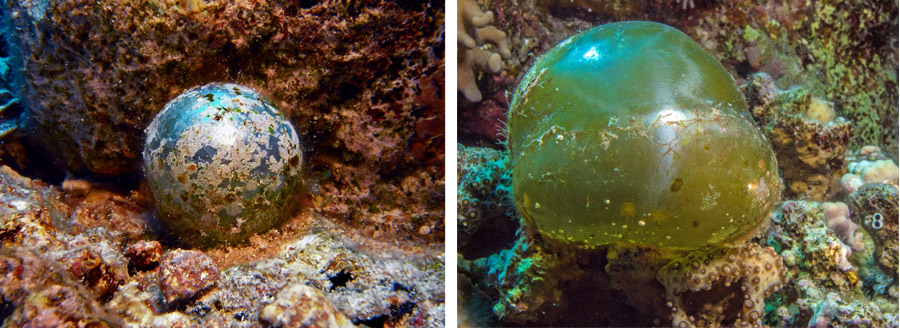BUBBLE GREENS / SAILOR´S EYEBALL
The bubble alga (Valonia ventricosa) is like all algae a plant.
It is found worldwide in tropical and subtropical seas, at depths from 1 to 80 meters.
The bubble-alga lives individually, more rarely than group of two to three, on coral rubble, in cracks and ingrown in corals.
Unique to the bubble algae, compared to all other algae, is on the one hand its spherical to oval shape, which when fully grown can have a diameter of up to 6 cm, and on the other hand its shiny silvery to bottle-green color.
This unique silver and bottle-green shiny spherical shape is the reason why this algae attracts the attention of divers. What has this ball, similar to a glass eye, lost in the reef?
This will also be the reason why the bubble green alga is also called sailor's eye and bubble alga.

The bubble alga (scientific name Valonia ventricosa) is one of the largest unicellular organisms at all. The body consists of a single, thin-walled, multi-nucleated cell and is filled with carbon monoxide.
This gas-filled ball also gives the alga a solid, stable form. Hair-fine rhizoids ensure that the bubble algae cell is firmly attached to the substrate (substrate).
Often the ball is partly covered with calcareous deposits or other smallest species.
Reproduction occurs through cell division or individual rhizoids form new bubbles that separate from the parent organism.
When the algae dies, it loses its stable solid spherical shape and its cell surface becomes soft and then looks similar to a balloon that loses air.
Photos: Johann Vifian
Sources: Red Sea coral reef guide Ewald Lieske / Robert Meyers Tungsten Brown Seaweed
